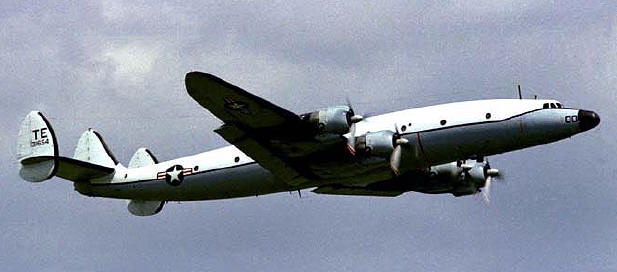|
|
| Lockheed
EC-121 Warning Star |
 |
Howard Hughes was one of the driving forces
behind the design of the Lockheed Constellation commercial
transport. During WWII, the USAAF purchased 22 early model
Constellations which were designated as C-69s. At the end of the
war, the USAAF decided to standardize on the Douglas C-54 as its
four-engined transport of choice, and promptly declared most of
the C-69s as surplus. Production of the basic design was turned
over to the civil market, which lead to the famous Constellation
series of airliners. The C-121A was the military variation of
commercial Model 749 Constellation. Between 1948 and 1955 the
USAF ordered 150 C-121As for use as cargo/passenger carriers,
executive transports, and airborne early warning aircraft. As a
troop carrier, they could carry a maximum of 44 passengers.
Fifty-five percent of the Super
Constellations built by Lockheed were delivered to the U.S. Navy
and Air Force. A majority of the aircraft were used for
electronic reconnaissance and airborne early warning. In the
mid-1960s, the Air Force sent the first EC-121 "Warning
Star" to Southeast Asia to maintain radar
surveillance over North Vietnam and then later to warn of MiG
attacks and alert American pilots who were straying over Chinese
territory.
Most C-121As were later converted into the
VC-121A VIP transport configuration for use by top brass
officials such as Generals MacArthur and Eisenhower. The lone
VC-121E Constellation (#53-7885) was named "Columbine
III" and was used throughout the Eisenhower Administration
as Air Force One. All C-121As were phased out of service by 1968.
|
|
|
|
